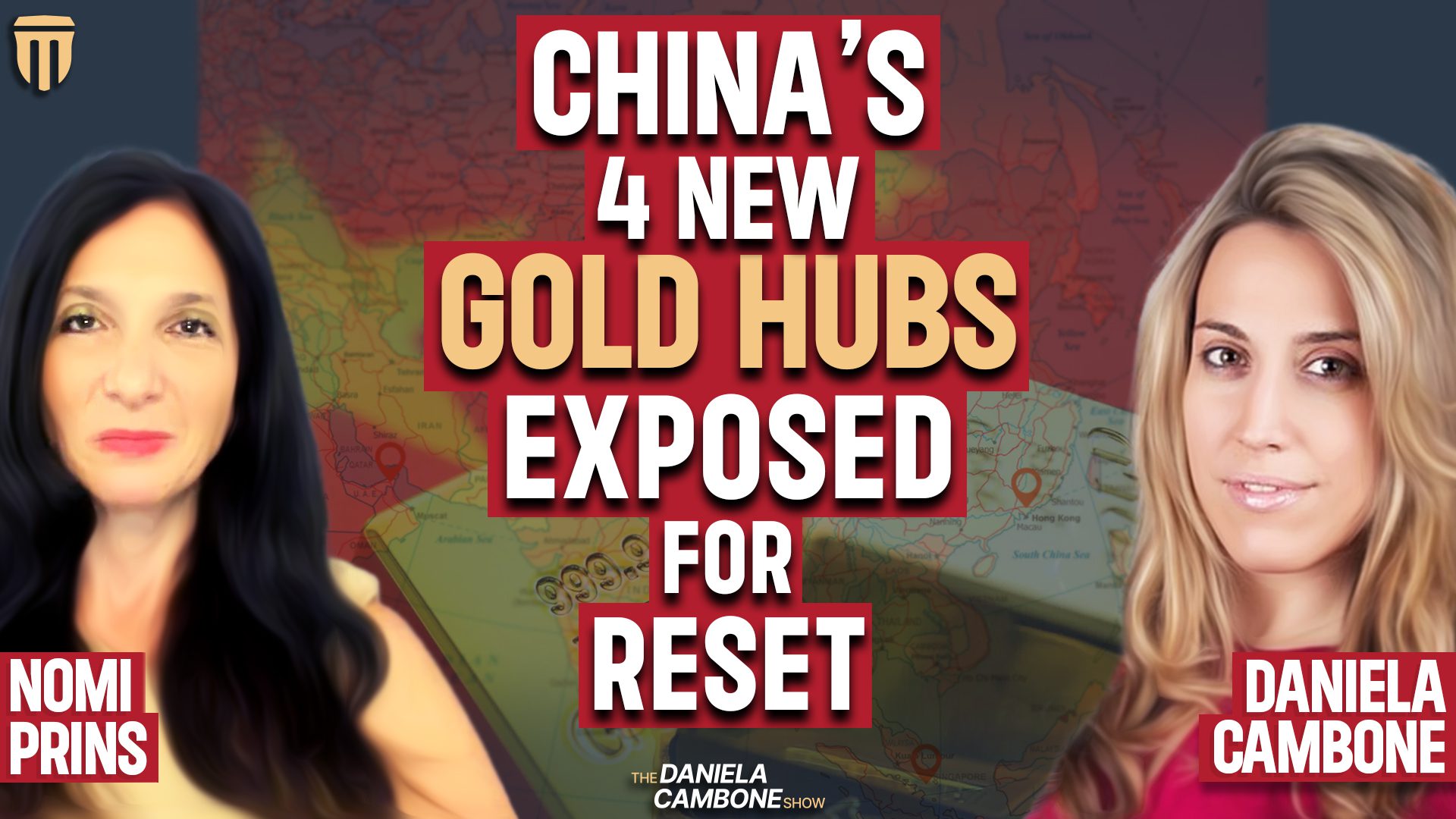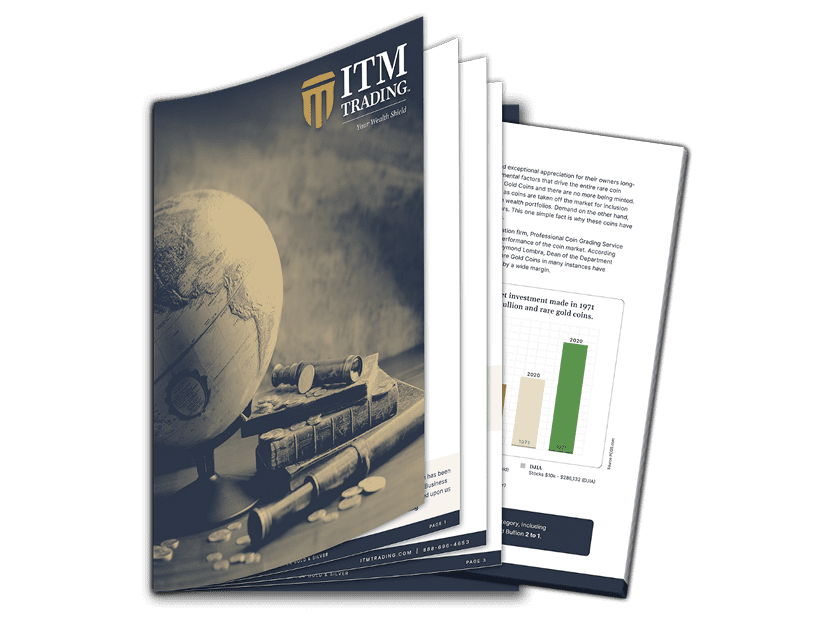Is China Secretly Resetting the Gold Price?

“You can’t reset the gold price. It’s global. No one nation can do that,” says Dr. Nomi Prins, international economist and investigative journalist. In an interview with Daniela Cambone, Prins unpacks the myths behind recent headlines claiming China is resetting the gold price.
She clarifies that while China isn’t resetting the price, it is making structural moves to reduce its reliance on the U.S. dollar and elevate gold’s role in trade and settlement. “What China is doing is accumulating more gold in its reserves while it is selling US Treasury bonds,” she explains.
Addressing the upcoming July 1 Basel III deadline, Prins notes that gold is already classified as a Tier 1 asset under current rules. However, it is not yet recognized as a High-Quality Liquid Asset (HQLA) in the U.S. banking system. “The July 1st date matters, but the attribution to the date that’s out there is mostly inaccurate,” she says, emphasizing that the Fed’s decision remains uncertain.
China’s Quiet Gold Power Play: Dr. Nomi Prins Unpacks What It Means for You
Featuring Dr. Nomi Prins on The Daniela Cambone Show – Presented by ITM Trading
Is China preparing to reset the global gold price? The rumor mill has been spinning—but bestselling author and investigative economist Dr. Nomi Prins joined Daniela Cambone on The Daniela Cambone Show to cut through the hype and explain what’s really happening behind the scenes.
Her findings should serve as a wake-up call for Americans—especially those over 50—who are concerned about protecting their retirement savings and preserving purchasing power in a world of rising debt, fading fiat credibility, and increasing central bank interest in physical gold and silver.
At ITM Trading, we help you interpret global shifts like this one and offer tangible solutions rooted in over 28 years of experience. Here’s what you need to know.
China’s Strategy: Buy Gold, Dump Treasuries, Bypass the Dollar
China is not directly “resetting” the gold price—but it is taking calculated steps to restructure global finance around gold rather than the U.S. dollar.
“They’re not just diversifying their reserves,” Prins explained. “They’re setting up an entirely new architecture for global trade—with physical gold at the foundation.”
Here’s what that strategy includes:
-
Aggressively accumulating physical gold
-
Dumping U.S. Treasuries as reserve holdings
-
Building out Shanghai and Hong Kong as rival gold trading hubs to Western institutions like the COMEX and LBMA
-
Creating digital payment rails that allow settlements using gold-linked values between national currencies
In short: China is attempting to lead a monetary transition—away from the U.S. dollar and toward a world where gold plays a central role in trade settlements.
Gold-Linked Trade: The New Global Trend?
Through partnerships with countries like Russia, India, and Brazil, China is encouraging trade in local currencies, but with one common denominator: gold.
“It’s not about replacing the dollar with a single new BRICS currency,” Prins clarified. “It’s about connecting national currencies to gold—using it as a neutral, physical anchor.”
This is already playing out in bilateral agreements, where nations are discussing how much gold needs to be held to back trade-related settlements.
Unlike fiat currencies, gold can’t be printed, manipulated, or sanctioned. That makes it the perfect tool for countries seeking independence from the dollar-based system—something central banks around the world now seem to agree on.
Can China—or Anyone—Reset the Gold Price?
Let’s be clear: no single nation, including China or the U.S., can unilaterally “reset” the global gold price.
“Gold is a global asset,” Prins explained. “But a country can reset how its own currency relates to gold.”
Think of the gold standard pre-1971—when the U.S. dollar was pegged to gold at $35 per ounce. That’s the kind of model China is slowly working toward—but on its own terms, and within its own ecosystem.
This matters because it shows that gold’s role as a monetary anchor is not a relic—it’s returning.
July 2025: Will Gold Become a Tier 1 Liquidity Asset?
Much has been made about July 1, 2025, as the date gold could be upgraded under Basel III regulations in the U.S. to a high-quality liquid asset (HQLA).
Dr. Prins unpacked the facts:
-
Gold is already a Tier 1 asset under Basel III, meaning it carries zero risk weighting on bank balance sheets.
-
What’s at stake is whether regulators will also classify gold as an HQLA, which would allow banks to count it toward short-term liquidity requirements.
-
That July 1st date was originally set by the Fed as a decision deadline—but has since been kicked down the road.
“The likelihood of this happening in the U.S. by July 2025 is very low,” Prins said. “But the Basel language already allows other countries to make that choice.”
Countries like Switzerland, Singapore, and the UAE are much closer to granting gold full liquidity status, which could spark a competitive race among central banks to adopt similar rules.
The U.S. Debt Crisis: A Ticking Time Bomb
The bigger backdrop to all this is the exploding U.S. national debt, now approaching $37 trillion and on track to hit $40 trillion within the next administration.
“Before the White House does anything in the morning,” Prins noted, “it’s already paying nearly a trillion dollars a year in interest alone.”
With 10- and 30-year bond yields still elevated, and a massive portion of federal obligations locked into long-term debt, the cost of servicing that debt now rivals the size of entire past deficits.
And unlike past periods of high interest rates, we’ve never had this level of debt. The result?
-
Growth is hampered
-
Investment is restrained
-
And countries like China are voting with their feet—selling U.S. bonds and buying gold
What This Means for Gold & Silver Prices
For years, ITM Trading’s experts—including David Morgan—have warned that gold and silver are rising not because they’re gaining value, but because the dollar is losing it.
This shift in global reserve strategy supports that trend. With central banks hoarding metals and alternative payment systems emerging, we believe:
-
Gold has entered a new uptrend that has only just begun
-
Silver, historically undervalued, could outperform as retail demand catches up
-
U.S. investors still have time—but not much—to position themselves wisely
Final Thoughts and Call to Action
Whether or not China “resets” the gold price, it’s clear that the global financial system is changing—and gold is at the center of that transformation.
At ITM Trading, we help you prepare for exactly this kind of shift. With decades of expertise, we guide clients in:
-
Acquiring and securely storing physical gold and silver
-
Protecting their portfolios from inflation, debt defaults, and central bank policy shifts
-
Building long-term wealth anchored in real, tangible assets
👉 Download your free gold and silver strategy report at DannyReport.com
Or schedule a personalized consultation with one of ITM Trading’s specialists today.
When debt surges and trust fades, gold rises. Don’t wait for headlines—prepare now.
THINKING ABOUT PURCHASING GOLD & SILVER? Get expert guidance from our team of analysts with 28+ years of experience. Schedule a free Q&A 👉 SCHEDULE YOUR CALL HERE or call 866-351-4219.
“The ITM team offers something unique—direct, personal guidance. What stood out to me right away was that they weren’t just focused on making a sale. Instead, they took the time to build my understanding of the function and value of precious metals.” — Gary P. [Verified Google Review]














